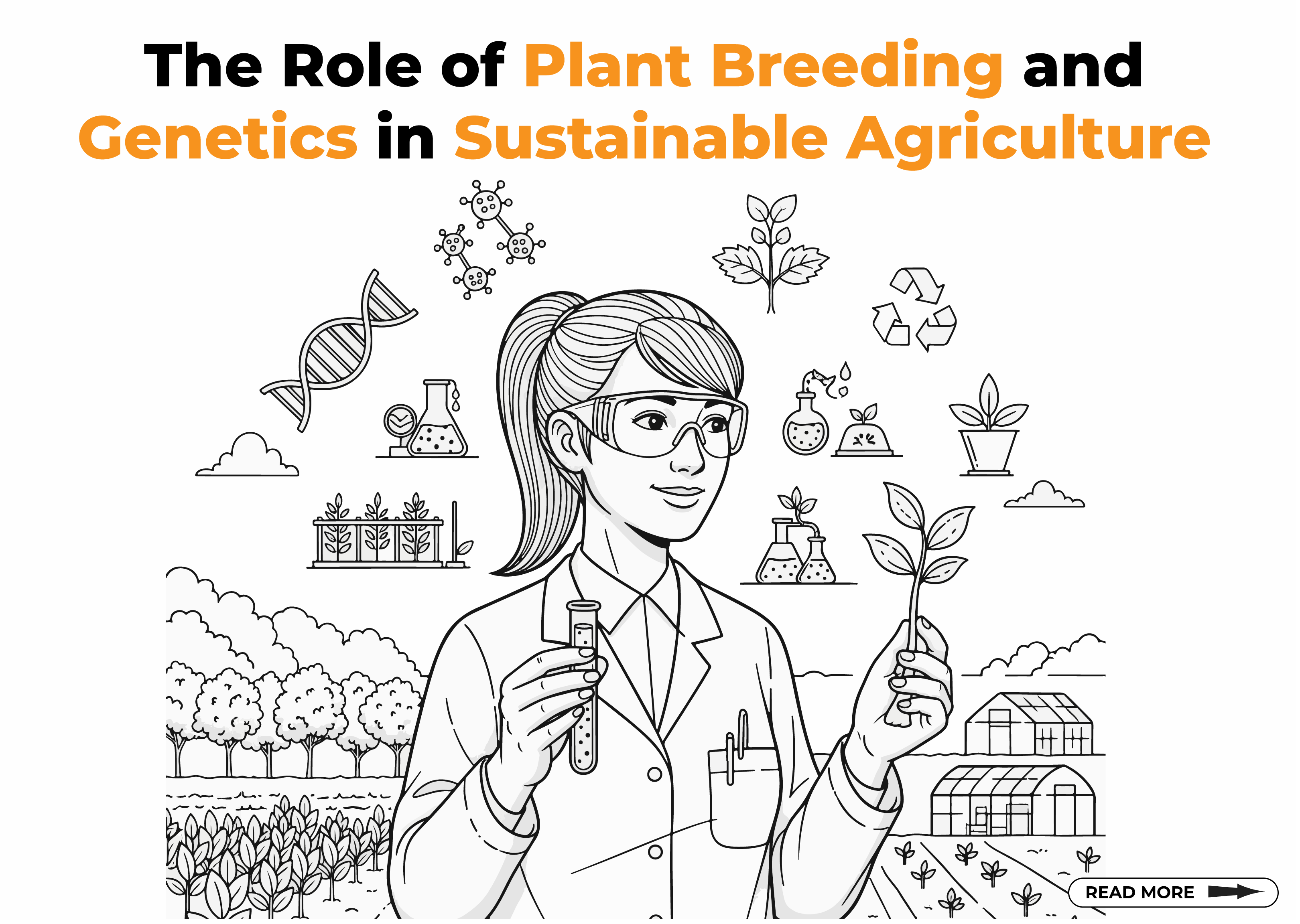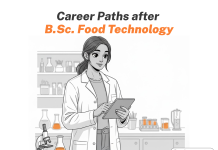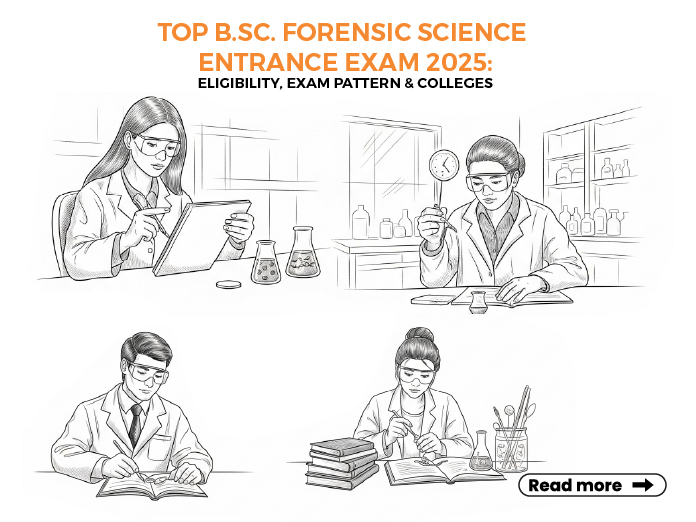Can We Feed the Future Without Destroying the Planet?
That question sits at the heart of every major agricultural debate today. The world is at a tipping point. Populations are growing fast. Climate change is disrupting weather patterns. Soil quality is declining. Meanwhile, our current farming systems often deplete resources and leave long-term environmental damage.
But hope is not lost. The answer could already be rooted in science. The future of food lies in plant breeding and genetics. This field is changing the way we grow crops, making them smarter, stronger, and more sustainable.
At Lovely Professional University (LPU), students and researchers are exploring these cutting-edge innovations that combine agriculture and food security, technology, and biology. This new wave isn’t just about producing more, it’s about growing better.
What Was the First Green Revolution—And Why Do We Need Another?
The first Green Revolution began in the 1960s. It introduced high-yielding varieties of wheat and rice, combined with chemical fertilisers and irrigation systems. In India, it helped prevent mass starvation. Food production soared. Farmers reaped record harvests. The country moved towards self-sufficiency in food.
But this revolution came with drawbacks. Over time, the intensive farming model led to overuse of water, pesticides, and synthetic fertilisers. Soil health declined. Water tables dropped. The focus on a few staple crops also reduced biodiversity. While it solved one problem, it created several new ones.
Today, agriculture faces challenges that the first revolution never had to consider, including rising temperatures, erratic rainfall, and degraded natural ecosystems. We need a second Green Revolution. But this one must be smarter, more precise, and environmentally friendly. It needs to be powered by plant biotechnology and genetic engineering in agriculture, tools that can produce more food while restoring balance with nature.
How Plant Breeding and Genetics Is Changing What We Grow?
Plant breeding is no longer just about crossing plants and hoping for the best. It now uses deep genetic understanding to create crops with specific traits. Scientists can identify genes that make crops survive drought, resist pests, or thrive in poor soil. These discoveries are turning into real-world solutions.
Take climate-resilient crops, drought-tolerant rice is helping farmers in dry regions. Pest-resistant cotton reduces the need for chemical sprays. Salt-tolerant wheat allows cultivation in saline soil. These are not just experiments in labs, they are already helping farmers produce more with less.
The role of genetic diversity in plants is equally important. Relying on just a few types of crops makes us vulnerable to disease and climate shocks. That’s why scientists are working to reintroduce rare varieties and breed new ones. Genetic diversity is not just about variety, it’s a safety net for food security.
Crop improvement through genetics also leads to better yield and quality. High-protein pulses, longer-lasting fruits, and faster-growing vegetables are all results of advanced breeding. These innovations support both farmers and consumers, building a more resilient food system.
Beyond Quantity: Breeding for Nutrition and Health
Producing more food is not enough. Many communities suffer from “hidden hunger”, a lack of essential nutrients like iron, vitamin A, or zinc. People may eat enough calories but remain malnourished. This is where biofortification becomes a powerful tool.
Biofortification uses breeding techniques to increase the nutrient content of crops. For example, scientists have developed iron-rich millets and vitamin A-enriched maize. These crops can prevent anaemia, improve eyesight, and boost immunity, especially among women and children in developing regions.
This shift from just feeding to nourishing reflects a larger transformation in agriculture. Plant breeding and genetics now serve both farmers and public health. By designing crops for nutrition, scientists are solving two major problems, food insecurity and malnutrition, at once.
At LPU, students are exposed to real-world case studies on how agricultural science can support human health. They learn how science and society are deeply connected through every grain we grow and consume.
Climate-Smart Agriculture Starts with Smarter Seeds
Climate change has introduced a new level of uncertainty in farming. Crops now face heatwaves, floods, droughts, and unexpected weather events. Traditional seeds can’t cope. To build resilience, we must start at the seed level.
Plant geneticists are designing seeds that can adapt to extreme weather. New varieties of maize can survive dry spells. Chickpeas are being bred to flower earlier to avoid heat stress. Tomatoes that grow in high temperatures are now in trials.
The success behind these innovations lies in advanced tools. Gene mapping helps identify the exact location of useful traits in a plant’s DNA. Marker-assisted selection allows breeders to speed up crop development by selecting only the best traits. Genome editing tools like CRISPR let scientists precisely change DNA without introducing foreign genes.
These tools are making agriculture more predictive and less risky. At LPU, students get hands-on training in these modern techniques. The university’s labs are equipped to teach practical skills that will be in high demand in the future of climate-smart agriculture.
The Future Is Farmer-Focused and Technology-Enabled
While labs and research centres lead innovation, the real change happens on farms. Farmers are the end users of every new seed, tool, or method. That’s why collaboration between scientists and farmers is essential.
Across India, breeders are working closely with farmers to develop region-specific solutions. A drought-tolerant variety suitable for Rajasthan may not work in Assam. Local climate, soil, and market demands all play a role. Customisation is key.
The rise of agri-tech startups is accelerating this transformation. Many new companies are working on seed innovation, crop modelling, and digital farming tools. They use data analytics to predict crop performance and offer farmers advice through mobile apps. Others focus on making breeding more efficient with AI and machine learning.
Technology is also helping bridge the gap between the field and the lab. Farmers now share data, challenges, and feedback in real time, helping researchers fine-tune their innovations. This feedback loop creates smarter seeds and more effective solutions.
LPU: Nurturing the Future of Sustainable Agriculture
Lovely Professional University (LPU) plays a leading role in advancing sustainable agriculture through programmes like BSc (Hons) Agriculture, MSc Genetics and Plant Breeding, and MSc in Biotechnology. The curriculum integrates core sciences with modern tools such as genetic mapping, data structuring, and AI. Students gain hands-on experience in labs for plant tissue culture, molecular biology, and genome editing. Interdisciplinary learning with data science and agri-business ensures real-world application. With industry exposure, live research, and innovation-driven training, LPU equips students to tackle food security and climate change through cutting-edge agricultural solutions. It’s where science meets sustainability.
Conclusion
The first Green Revolution gave us a powerful tool that is food security. The second must give us something even greater, sustainability. We now know that feeding the world is not just about producing more. It’s about growing crops that protect the planet, nourish people, and secure the future.
Plant breeding and genetics offer a clear path forward. With climate-resilient crops, nutrient-rich varieties, and advanced breeding tools, we can meet rising food demands without harming the environment. This approach combines science, technology, and traditional knowledge to rebuild agriculture from the ground up.
Lovely Professional University is preparing students to lead this transformation. Through hands-on training, global research exposure, and state-of-the-art facilities, LPU empowers the next generation of agricultural scientists and innovators.
If you want to grow food that feeds people and saves the planet, start your journey here.












![Is B Sc. Information Technology [2+2 with International Credit Transfer Option] the Right Course for You? Is B Sc. Information Technology [2+2 with International Credit Transfer Option] the Right Course for You](https://www.lpu.in/blog/wp-content/uploads/2025/11/Is-B-Sc.-Information-Technology-22-with-International-Credit-Transfer-Option-the-Right-Course-for-You-100x70.png)

